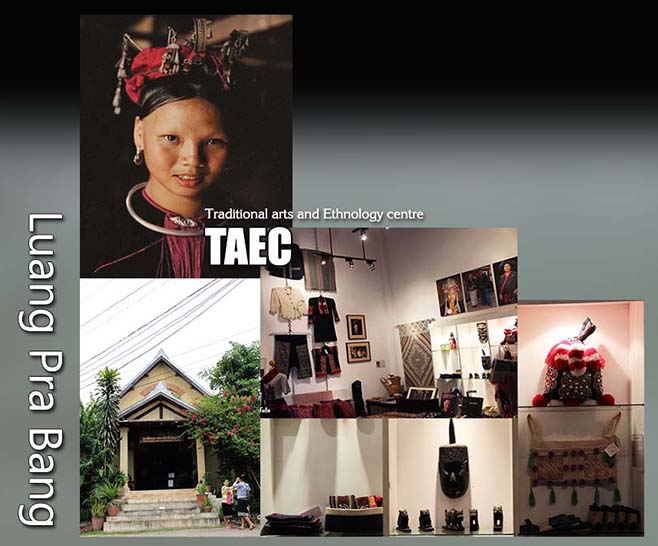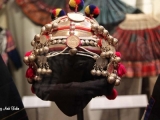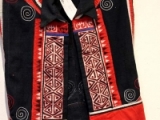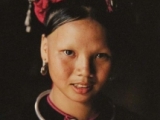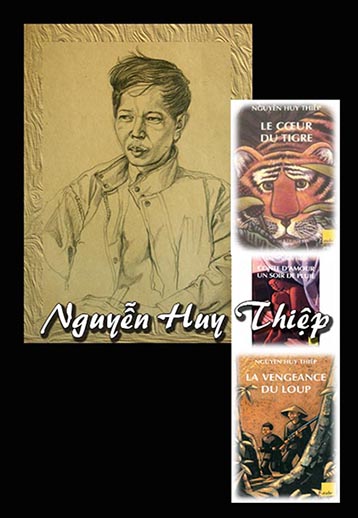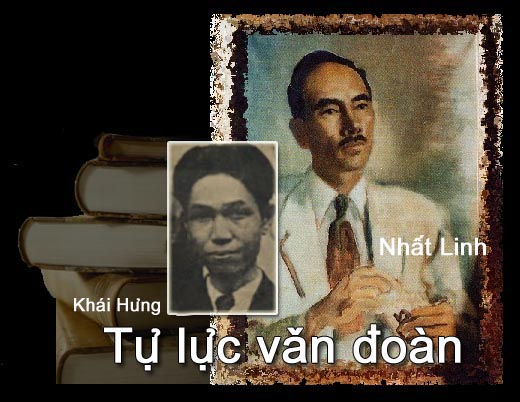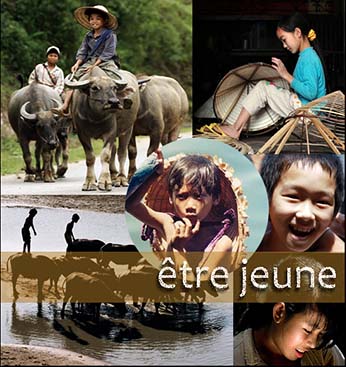Mois : décembre 2016
Hammock (Cái võng)
The hammock is an instrument very familiar to the Vietnamese. For many generations, one was used to hearing its resonant creaking with a regular cadence from the South to the North of Vietnam. This strident sound blended with the crying of the little children and lullabies becomes a tune of music eternally rooted in the Vietnamese soul. Poor or rich, each Vietnamese possesses at least one hammock. It is not only the cradle of the little Vietnamese children but also their swing.
It is used by adults for relaxing. It is also a resting bed for people of old age. It is the only instrument that no Vietnamese could do without. It is a habit to say that in Vietnam one has grown up with the sound of the hammock ( lớn lên trong tiếng võng ) and will grow old in the lullabies ( già trong lời ru ) because the latter are sung tirelessly by the mothers or grand-mothers to pamper their children or grandchildren.
The lullabies stay the same but this time they are sung by a young mother who by a curious coincidence may be the girl he had known at the time he was an adolescent, or an old ferry crossing. It is sure there will be in this case the same resentment felt by a person returning to his or her native village after so many years of absence, proven in this following lullaby:
Bước chân vào ngõ tre làng
Lòng buồn nặng trĩu nghe nàng ru con
Bước lên thềm đá rêu mòn
Lòng buồn nặng trĩu nghe buồn võng đưa
One feels sad, setting foot on the village entrance
Hearing the nursery rhyme lulling her baby in cadence,
One feels sad, stepping on the worn and mossy rock
Hearing the melancholic creaking sound of the hammock.
One cannot stay insensitive when one is the issue of the Mekong delta when listening to the following lullaby:
Ầu ơ .. Bao giờ Chợ Quán hết vôi,
Thủ Thiêm hết giặc em thôi đưa đò,
Bắp non mà nướng lửa lò
Ðố ai ve được con đò Thủ Thiêm.
Âu ơ .. When the Chợ Quán market is out of lime,
The Thủ Thiêm region is out of war, I will stop being a ferrywoman.
Young and tender corn baked in oven,
I bet anyone who could court me, the boat of Thủ Thiêm.
This has without a doubt, made us relive the time of our youth, a time when we were still carefree, we would like very much flirting the girls even the ferrywoman.
Even the hammock is simply made of jute or fabrics, the sound provoked by its back and forth motion continue to anchor itself softly in the intimacy of our conscience and in our spiritual lifestyle and become as the years go by, the most talked about in the Vietnamese popular songs.
Ðố ai nằm võng không đưa,
Ru con không hát, đò đưa không chèo
Let’s bet who is sleeping on a hammoc without swinging,
Lulling a child to sleep without saying nursery rhyme, conducting a sampan without rowing.
In the old days, the hammock was also used to transport women or mandarins who did not know how to ride on horseback. The hammock is held up by a big bamboo resting on the shoulder of two men who trotted along with a rhythmical look. To shelter from the sun, a sedge matt is placed astride the bamboo. This assembly is often known as palanquin. This one has to follow certain protocols when it comes to a palanquin used by mandarins. According to their rank, the line that accompanied the palanquin was more or less important. One or several persons preceding the official palanquin bore arms (sabres, sticks etc…). By the sides of the palanquin walked the porters of parasols, betel nut box, spittoon, water pipe etc… This palanquin was replaced only at the appearance of the rickshaw in 1884 in Hànội.
The hammock was also the dream of most of Vietnamese young girls to be married to a mandarin as in our tradition, the young bride was riding in a palanquin preceded by her husband on horseback. ( Ngựa anh đi trước, võng nàng theo sau ).
In the West, one has the Eye of Cain to symbolize the torture of moral conscience. In Vietnam, to talk about this torture, one refers often to the creaking of the hammock of » Con Tấm » (or Vietnamese Cinderella ) because this creaking brings back the thought the wandering soul of Tấm, victim of a plot hatched by her half-sister Cám and her step mother, trying to take revenge on Cám. The moment this one lay down on the hammock, its creaking became so deafening and menacing that Cam had the feeling her sister Tam’s wandering soul substituted for the hammock.
Nowadays, in the cities, well-to-do people replace the hammock with a bed for their little children. But it is certain that the bed, despite its comfort and attractiveness, cannot be recognizable as a familiar instrument, own and intimate of the Vietnamese people because its use is very limited and it lacks another part, the creaking that comes along with melancholic lullabies to become an eternal and irreplaceable tune of music.
In spite of its rudimentary constitution, the hammock continues to give rhythm to the Vietnamese life and witness as the years go by,the intimacy and cultural specificity of the Vietnamese people.
Nguyễn Huy Thiệp (Version anglaise)
Assigned up until 1986 to the job of drawing illustrations for school manuals in an office of Publishing and Education in Hà-Nội, Nguyễn Huy Thiệp, taking advantage of the openness policy known as Ðỗi Mới ( Renovation ) at the time the Vietnamese communist party held its 6th congress, published in 1987 his first book called » The breezes of Hứa Tát » printed in » Literature and Art », the prestigious magazine of the National Association of Writers.
His success was not slow. But it was due mostly to his work entitled « The retirement of a general » when it was published in June 1987. This has provoked not only an earthquake in Vietnamese public opinion but also a hope to see draining in its trail a new generation of young writers without shady deal and having an independent and critical mind that seemed almost non-existent up until then in the Vietnamese literature.
His success was not slow. But it was due mostly to his work entitled » The retirement of a general » when it was published in June 1987. This has provoked not only an earthquake in Vietnamese public opinion but also a hope to see draining in its trail a new generation of young writers without shady deal and having an independent and critical mind that seemed almost non-existent up until then in the Vietnamese literature.
· A general in retreat (in retirement)
· The heart of the tiger
· The vengeance of the wolf
· Demons live among us.
· Tale of love. A rainy evening
· The gold and fire
· My uncle Hoat
· In our twenties
 Thanks to his collection of tales, Nguyễn Huy Thiệp became overnight a shining figure in the Vietnamese literature. His readers including the diaspora find in him not only the talent of a writer but also the boldness to break the taboo and the unspoken kept until then by customs and a system fallen into disuse. At present, he is considered a great Vietnamese writer. With his much sober style, he succeeds in sensitizing easily the reader because he uses metaphors and allusions with his raw language to describe the reality of today in Vietnam, the one with all alienation presently forming the social fabric of the country.
Thanks to his collection of tales, Nguyễn Huy Thiệp became overnight a shining figure in the Vietnamese literature. His readers including the diaspora find in him not only the talent of a writer but also the boldness to break the taboo and the unspoken kept until then by customs and a system fallen into disuse. At present, he is considered a great Vietnamese writer. With his much sober style, he succeeds in sensitizing easily the reader because he uses metaphors and allusions with his raw language to describe the reality of today in Vietnam, the one with all alienation presently forming the social fabric of the country.
Selecting typical situations and characters in his novels and tales, he makes us uncover with terror all the contradiction of the Vietnamese society, all the unbearable truths, the gangrene of the Bad, the collapse of moral values of a society. He dares to display in public forum the collapse of a system, to scour the social flesh with his black humor and his freezing realism. He succeeds in showing us all the facets of society through his short and bare passages with a talent of a storyteller and that of a writer in total breaking off with the generation of writers compromising with the regime. If he succeeds in building news with an astonishing ease, it is a great deal due to his growing up in the countryside with his mother during his youth, and to his training as a historian when he attended teaching college in 1970 in Hanoi. The work of the Chinese historian Si Ma Qian (Tư Mã Thiên ) has an enormous influence on his tales, especially on his style. He has said one day in 1990 to the French magazine Libération: I don’t think people can write when uprooted. He preferred to stay in Vietnam in order to be able to write his tales, to reveal the true nature of a system and to express the anger and hidden feeling of a human being crushed by years in mud, war and deprivation. Although he has never been in politics, he is always a suspect in the eyes of the Vietnamese authorities because of his liberal words that shake state apparatus. He embodies the symbolic expression of the state of mind of the whole people in search of a stolen and lost treasure.
All those who defended him, in particular the manager of the Văn Nghệ. Review, have been fired. A campaign of denigration in the official media was launched in the past. He was blamed for having published the trilogy to historical argument that attacked national hero Quang Trung through his work « Dignity ». Despite censorship, threats and intimidation, the courageous newspapers continue to publish today his collections. Some of them have already been printed in French at l’Aube publishing house.
The characters in his tales are human beings sexually, morally and socially alienated. They are ordinary people that are thrown, by the ups and downs of life and the system, in perversion, humiliation, abuse, lunacy and profit. In » There is no king », dirty old man Kiên prefers to eye quietly hairy young women, in particular his daughter-in-law Sinh who because of her 5 children she has to raise, has no means to get remarried, that’s what he said to his son Ðoài when the latter overtly criticized him. It is shocking to see an 80-year old man dying of heart attack in « The Forgotten Land », Panh who tried to fell a tree to contest a challenge and to be able to marry a 14-year old girl that he has known during his passage to Yên Châu. In « The Retirement of a general », his character, retired general Thuận cannot keep his mouth shut when he dares to speak in front of his superiors about the three activities forming the indispensable economic model in the present system: gardening, fish farming and animal husbandry. He expiates a mistake of not knowing how to protect himself. He prefers an honorable death to an ignominious life. He was buried with all military honors. He was a great man. He died for his country during a mission, which was said by general Chương to his son. One sees profit and cronyism growing in all layers of society and new people. Each country has its own customs, said by Mr. Thuyết to his sawing employees in the novel « Sawyers in the long ». Likewise, the daughter-in-law of general Thuâ.n, taking advantage of her physician role, assigned to do abortion and curettage, takes home every night abandoned fetuses in a Thermos flask to cook and feed the pigs and shepherd dogs, which presently constitutes a significant financial resource for a Vietnamese family.
Nguyễn Huy Thiệp continues to angrily munch Vietnam with his tales and stories. Like everyone in Vietnam, he tries to find a solution to his daily needs and above all to give a meaning, a signification to his existence like his character Mr. Quý in his « Nostalgia of the Campaign »: To be intellectual is to be capable of giving a meaning to the life we live. In spite of a bitter heritage, he is at least content of the consolation though his tales and stories.
Nguyễn Huy Thiệp (Version Française)
Được tuyển dụng cho đến năm 1986 trong công việc vẽ tranh minh họa cho sách giáo khoa tại văn phòng ở Hànội, Nguyễn Huy Thiệp, lợi dụng chính sách mới rộng rãi được gọi là « Đỗi Mới » trong Đại hội thứ 6 của đảng cộng sản Việt Nam mà ông xuất bản tháng giêng năm 1987, tuyển tập đầu tiên của ông có mang tên là “Những cơn gió Hứa Tát” được đăng trên tạp chí uy tín của Hội Nhà văn toàn quốc “Văn nghệ”.
Ông không quá mất nhiều thời gian để được sự thành công. Nhưng phải nói ông được như vậy đấy là nhờ tuyển tập “Tướng về hưu” ra mắt vào tháng 6 năm 1987. Điều này không chỉ gây ra một cơn chấn động trong dư luận của ngừơi Viêt mà còn xem đây là niềm hy vọng được nhìn thấy theo gương ông một thế hệ nhà văn trẻ mới không khoan nhượng, có tính độc lập và phê phán như Phạm Thị Hoài, Bảo Ninh vân vân mà cho đến nay dường như không có tồn tại trong văn học Việt Nam.
Tướng về hưu
Trái tim hổ
Sự báo thù của soái
Ma quỉ sống giữa chúng ta
Chuyện tình kể trong đêm mưa.
Vàng và lửa
Chú Hoạt tôi
Tuổi hai mươi yêu dấu vân vân…
Nhờ các truyện ngắn, Nguyễn Huy Thiệp đã trở thành nhân vật hàng đầu của văn học Việt Nam. Các độc giả của ông, luôn cả những người ở hải ngoại, nhận thấy ở nơi ông không chỉ tài năng của một nhà văn mà còn có sự liều lĩnh dám phá bỏ những điều cấm kỵ và những điều chưa nói được duy trì cho đến bây giờ bởi phong tục và một hệ thống không còn được trọng dụng. Ông hiện được xem là nhà văn vĩ đại nhất của Việt Nam. Với lối viết giản dị, ông dễ dàng làm người đọc nhạy cảm vì ông biết cách sử dụng những ẩn dụ và ám chỉ bằng ngôn ngữ thô thiển của mình để mô tả thực tế ngày nay ở Việt Nam và để nói lên những tha hóa hiện đang hình thành cơ cấu xã hội của đất nước.
Bằng cách lựa chọn những tình huống và các anh hùng tiêu biểu trong truyện ngắn và truyện cổ tích của mình, ông làm chúng ta kinh hãi khám phá ra tất cả những mâu thuẫn của xã hội Việt Nam, tất cả những sự thật không thể chịu đựng nổi, sự hoại tử của cái ác, sự suy sụp của các giá trị đạo đức của một xã hội. Ông ta dám vạch trần sự thất bại của một hệ thống giữa quần chúng, dày vò thân xác xã hội với khiếu hài hước tối tâm và tính hiện thực lạnh lùng của mình. Ông cố gắng cho chúng ta thấy tất cả các khía cạnh của xã hội thông qua những bài viết ngắn gọn và giản dị với tài năng của một người kể chuyện và của một nhà văn, hoàn toàn đoạn tuyệt với nhóm nhà văn có thiện cảm với chế độ.
Nếu ông có thể viết truyện ngắn một cách dễ dàng đáng kinh ngạc, thì điều này phần lớn là nhờ lúc thời thiếu niên, ông sống ở môi trường nông thôn với mẹ và nhờ được sự đào tạo thành nhà sử học mà ông theo học ở Đại học Sư phạm Hà Nội từ năm 1970. Tác phẩm của nhà sử học Trung Quốc Tư Mã Thiên có ảnh hưởng rất lớn đến các bộ sưu tập của ông, đặc biệt là lối viết của ông. Ông từng nói với tờ báo Pháp Libération vào năm 1990: Tôi không tin bạn có thể viết khi bạn đã mất gốc. Ông thích ở lại Việt Nam hơn để có thể viết những tuyển tập của mình, ghi lại sự quan sát của một hệ thống và bày tỏ sự tức giận cũng như nỗi lưu vong ở nội tâm của một người bị đè bẹp bởi nhiều năm bùn lầy, chiến tranh và thiếu thốn. Dù chưa bao giờ tham gia chính trị nhưng ông luôn bị chính quyền Việt Nam nghi ngờ vì quyền tự do ngôn luận của ông khiến bộ máy nhà nước phải lo sợ và ông là hiện thân biểu tượng tâm trạng của cả một dân tộc tìm kiếm một kho tàng đã bị mất và bị đánh cắp.
Tất cả những người đứng ra bảo vệ ông, đặc biệt là giám đốc tạp chí « Văn Nghệ », đều bị sa thải. Còn có cả chiến dịch bôi nhọ ông không ngần ngại trên báo chí chính thống. Ông bị chỉ trích vì ông xuất bản tác phẩm có ba tập mang tính cách lịch sử làm tổn thương vị anh hùng dân tộc Quang Trung qua truyện “Nhân phẩm”. Bất chấp sự kiểm duyệt và lời đe dọa, những tờ báo dũng cảm vẫn tiếp tục xuất bản các tuyển tập của ông cho đến ngày nay, một số trong đó đã xuất hiện bằng tiếng Pháp bởi nhà xuất bản « Aube » ở Pháp.
Những anh hùng trong bộ sưu tập của ông là những người bệnh tâm thần về mặt tình dục, đạo đức và xã hội. Họ là những người bình thường mà những thay đổi thất thường của cuộc sống và hệ thống dẫn đến sự trụy lạc, sỉ nhục, lạm dụng, điên rồ và trục lợi. Trong truyện ngắn “Không Có Vua”, ông già Kiên thích lén lút ngắm nhìn những phụ nữ trẻ khỏa thân, đặc biệt là con dâu Sinh vì ông phải nuôi 5 đứa con nên không có khả năng tái hôn. Ông nói với con trai mình là Đoài khi người này công khai chỉ trích ông. Thật bàng hoàng khi chứng kiến cụ Panh 80 tuổi chết vì đau tim trong truyện ngắn « Vùng đất bị lãng quên » khi cố chặt cây để thực hiện thử thách và có thể cưới được bé gái 14 tuổi người mà ông đã gặp trong thời gian ở Yên Châu. Trong truyện “Tướng về hưu”, người hùng của ông, tướng Thuận không biết kiềm chế khi dám nói trước mặt cấp trên về ba hoạt động hình thành mô hình kinh tế thiết yếu trong hệ thống hiện nay: làm vườn, nuôi cá và vật nuôi trong nhà. Ông ta chuộc lỗi mà ông ta không thể tự bảo vệ mình. Ông ta thích một cái chết vinh quang hơn một cuộc sống ô nhục. Ông được chôn cất với đầy đủ nghi lễ trọng thể trong quân đội. Đây là một người đàn ông tuyệt vời. Ông đã hy sinh vì đất nước trong một lần làm nhiệm vụ, điều mà tướng Chương đã kể lại cho con trai ông. Còn được thấy lợi nhuận và hệ thống bè phái đang phát triển ở mọi tầng lớp và mọi cấp độ ở trong xã hội. Mỗi nước đều có một phong tục riêng, đó là điều ông Thuyết nói với những người thợ xẻ trong truyện ngắn “Những người thợ xẻ”. Tương tự như vậy, con dâu của tướng Thuận, lợi dụng chức danh bác sĩ, chịu trách nhiệm phá và nạo thai, thu hồi lại những bào thai bị bỏ rơi mà mỗi tối cô ta mang về nhà trong bình thermo để nấu lại và cho lợn và chó chăn cừu ăn, hiện nay là nguồn tài chính đáng kể của một gia đình Việt Nam.
Nguyễn Huy Thiệp tiếp tục viết những tuyển tập ngắn của mình với tư cách giận dữ. Tựa như người dân Việt, ông cố gắng tìm ra một giải pháp cho nhu cầu hằng ngày của mình và nhất là mang lại một ý nghĩa cho sự tồn tại của mình cũng như nhân vật tên Quý trong “Thương nhớ đồng quê”: Là một người trí thức thì phải có khả năng mang lại một ý nghĩa cho cuộc sống mà ta đựơc có. Mặc dù có một gia tài quá cay đắng, ông vẫn hài lòng khi ông có được ít nhất niềm an ủi qua các truyện ngắn và cổ tích cùa ông.
Cantonné jusqu’en 1986 dans le travail de dessin des illustrations pour manuels scolaires dans un bureau des Editions de l’Education à Hanoï, Nguyễn Huy Thiệp, profitant de la nouvelle politique d’ouverture connue sous le nom » Ðỗi Mới « ( Renouveau ) lors du 6ème congrès du parti communiste vietnamien, publia en Janvier 1987 son premier recueil intitulé « Les vents de Hứa Tát » paru dans le journal prestigieux de l’Association des écrivains nationaux « Littérature et Art ».
Son succès ne tarda pas. Mais il le dut surtout à son recueil intitulé « La retraite du général » quand celui-ci parut en Juin 1987. Cela provoqua non seulement un séisme dans l’opinion publique vietnamienne mais aussi un espoir de voir drainer dans son sillage une nouvelle génération de jeunes écrivains ( Phạm Thị Hoài, Bảo Ninh etc.) sans compromission et ayant un esprit d’indépendance et de critique qui semble être quasi inexistant jusqu’alors dans la littérature vietnamienne.
Un général à la retraite
Le cœur du tigre
La vengeance du loup
Les démons vivent parmi nous.
Conte d’amour. Un soir de pluie
L’or et le feu
Mon oncle Hoat
A nos vingt ans etc.
Grâce à ses recueils de nouvelles, Nguyễn Huy Thiệp devint du jour au lendemain la figure de proue de la littérature vietnamienne. Ses lecteurs y compris ceux de la diaspora retrouvèrent en lui non seulement le talent d’un écrivain mais aussi l’audace de briser le tabou et le non-dit entretenus jusqu’alors par les coutumes et par un système tombé en désuétude. On le considère actuellement comme le plus grand écrivain vietnamien. Avec son style très sobre, il arrive à sensibiliser facilement le lecteur car il sait se servir des métaphores et des allusions avec son langage cru pour décrire la réalité d’aujourd’hui du Vietnam et celle de toutes les aliénations formant actuellement le tissu social du pays.
En sélectionnant des situations et des héros types dans ses nouvelles et ses contes, il nous fait découvrir avec effroi toutes les contradictions de la société vietnamienne, toutes les vérités insupportables, le gangrène du Mal, l’effondrement des valeurs morales d’une société. Il ose déballer sur la place publique la débâcle d’un système, fouailler la chair sociale avec son humour noir et son réalisme glacial. Il arrive à nous montrer toutes les facettes de la société à travers ses textes brefs et dépouillés avec le talent d’un conteur et celui d’un écrivain en rupture totale avec la génération des écrivains compromis avec le régime. S’il arrive à écrire ses nouvelles avec une facilité étonnante, cela est dû en grande partie à sa jeunesse qu’il a vécue dans le milieu rural avec sa mère et à sa formation d’historien qu’il a suivie à Hanoï dans l’université de Pédagogie à partir de 1970. L’œuvre de l’historien chinois Si Ma Qian (Tư Mã Thiên) a influé énormément sur ses recueils, en particulier sur son style. Il a déclaré un jour en 1990 au journal français Libération: Je ne crois pas qu’on puisse écrire quand on est déraciné. Il a préféré rester au Viêt-Nam dans le but de pouvoir écrire ses recueils, de relever le constat d’un système et d’exprimer la colère et l’exil intérieur d’un être broyé par des années de boue, de guerre et de privations. Bien qu’il ne fasse jamais de politique, il est toujours suspect aux yeux des autorités vietnamiennes car sa parole libre fait trembler les appareils de l’état et il incarne l’expression symbolique de l’état d’âme de tout un peuple à la quête d’un trésor perdu et volé.
Tous ceux qui ont pris sa défense en particulier le directeur de la revue Văn Nghệ ont été limogés. On n’a pas hésité à lancer dans le passé une campagne de dénigrement dans la presse officielle. On lui reprocha la publication de la trilogie à argument historique qui portait atteinte au héros national Quang Trung à travers l’œuvre « Dignité ». Malgré la censure, les menaces et les intimidations, les journaux courageux continuent à publier aujourd’hui ses recueils dont certains sont déjà parus en français aux éditions de l’Aube.
Les héros de ses recueils sont des êtres aliénés sexuellement, moralement et socialement. Ce sont des gens ordinaires que les aléas de la vie et le système précipitent dans la perversion, l’humiliation, l’abus, la folie et le profit. Dans « Il n’y a pas de roi », le vieux Kiên préfère reluquer en douce sur les jeunes femmes à poil, en particulier sa bru Sinh car à cause de ses 5 enfants qu’il est obligé de nourrir et d’élever, il n’a pas le moyen de se remarier, ce qu’il dit à son fils Ðoai lorsque ce dernier l’a critiqué ouvertement. C’est choquant de voir mourir d’une crise cardiaque dans « La terre oubliée » un homme âgé de 80 ans, Panh qui a tenté d’abattre un arbre pour relever le défi et pour pouvoir épouser une jeune fille de 14 ans qu’il a connue lors de son passage à Yên Châu. Dans » Un général à la retraite », son héros, le général retraité Thuận ne sait pas retenir sa parole en osant parler devant son supérieur des trois activités formant le modèle économique indispensable dans le système actuel: le jardinage, l’élevage des poissons et des animaux domestiques. Il expie une faute dont il n’a pas su se préserver. Il préfère une mort honorable à la vie ignominieuse. On l’a enterré avec tous les honneurs militaires. C’est un grand homme. Il est mort pour la patrie au cours d’une mission, ce que le général Chương a dit à son fils. On voit se développer à toutes les couches de la société et à tous les niveaux le profit et le copinage. A chaque pays, ses coutumes, ce qu’a dit Mr Thuyết à ses employés scieurs dans la nouvelle « les scieurs de long ». De même, la bru du général Thuận, profitant de son rôle médecin, chargé des avortements et des curetages, récupère les fœtus abandonnés qu’elle ramène à la maison tous les soirs dans une bouteille Thermos pour les faire cuire et pour nourrir les cochons et les chiens bergers constituant actuellement une ressource financière non négligeable pour une famille vietnamienne.
Nguyễn Huy Thiệp continue à croquer rageusement le Viêtnam avec ses recueils et ses contes. Comme les gens du Vietnam, il essaie de trouver une solution à ses besoins quotidiens et de donner surtout un sens, une signification à son existence comme son héros Mr Quý dans « Nostalgie de la Campagne (Thương Nhớ Ðồng Quê) »: Être intellectuel c’est être capable de donner un sens à la vie qu’on mène. Malgré un héritage amer, il se contente d’avoir néanmoins sa consolation à travers ses récits et ses contes.
Literature (Văn chương)
Vietnam possesses an important literature, ancient as well as modern. Because of Chinese influence, the ancient literature was written in Chinese characters. It was only in about 13th century that the « nôm » began to replace the Chinese characters. Although the « nom » remains the expression of the common Vietnamese, it supposes the mastering of classical Chinese penmanship and the Vietnamese pronunciation of Chinese characters.
The Vietnamese literature tried to develop and freed itself from the Chinese model since 15th century, not only in style but also in theme. Nguyễn Trãi is one of the poets the most known by Vietnamese people. We owe him a collection of 254 poems in national language ( Quốc Âm Thi Tập ), whose translation into French language under the direction of P. Schneider is found in the Edition of CNRS, 1978, Paris. Nguyễn Trãi famous was his Bình Ngô Ðại Cáo ( Great Proclamation of The Pacification of The Ngô ). It is one of the most beautiful monuments of the Vietnamese literature.
But the most famous poems remain Chinh phu ngâm of poetess Ðoàn Thị Ðiểm and Kim Vân Kiều of Nguyễn Du ( 1756-1820 ). The latter composed during his retirement a novel composed of 3254 verses which symbolises for the majority of Vietnamese the heart and soul of the nation .
Everyone of Vietnamese knows it or many parts of it by heart. It is important to note that this masterpiece of the Vietnamese literature is also one of the masterpieces of world literature.
It is a poignant love story adapted from a Chinese novel, depicting an abundance of thoughts on the meaning of life, war, love and above all the purity of the soul inaccessible to bodily taints. The three key characters in this novel are Kim, Vân and Kiều. Separated from Kim by cruel circumstances and after so many years of suffering and humiliation, Kiều was rescued from suicide by fishermen who fished her from the river where she had wanted to drown herself. Following is an excerpt of this novel that describes the reunion of Kim and Kieu at the temple where she had spent her peaceful days.
In the joy of their reunion, they are moved by thought of their love of days before,
From the time their youth blossomed, tender like a lotus, delicious like a peach,
Fifteen years have gone by and now the dream has come true.
The detachment from the Chinese models has been accelerated by the development of the « quốc ngữ » ( Vietnamese writing in Roman alphabet ) favored by the colonization. In 1932, motivated by Nguyễn Tường Tam also known as Nhat Linh, writing club Tự Lực Văn Ðoàn was founded. This movement endeavored itself to the creation of a national literature starting from traditional bases and the most acceptable foreign influences. It relied on a review called Ngày Nay whose editors team was made of known writers such as Khái Hưng, Thạch Lam, Thế Lữ etc..
The Vietnamese literature written in French began with Phạm Quỳnh through articles of reflection on Vietnamese culture and the difficulty of dialogue between eastern and western cultures. Phạm Duy Khiêm published legends and an autobiographic novel. Phạm Văn Ky elicited in a profound manner the dialogue of the East and the West in his romanesque works ( Blood Brothers, 1947; Those Who Will Reign, 1954 etc…). While historical evolution and mostly the war seemed to drain that literature, the arrival in France of several refugees has revived a literature of witnessing ( Kim Lefèvre ) and also one in search of identity.
- Independent literary group (Tự Lực văn đoàn)
- Hồ Xuân Hương poetess
- Nguyễn Huy Thiệp
Independent Literary group (Tự lực văn đoàn)
Titles of best-known novels
Hồn Bướm Mơ Tiên (1933)
Nữa Chừng Xuân (1934)
Ðoạn Tuyệt (1935)
Trống Mái (1936)
Lạnh Lùng (1937)
Tiêu Sơn Tráng sĩ (1937)
Thoát Ly (1938)
Tắt đèn (1939)
Bướm Trắng (1941)
Articles founded on the Net
Anh phải sống (1937)
Tiểu sữ Tự Lực Văn Đoàn 1930-1945
It is regrettable not to see appearing Nhất Linh et Khá’i Hưng’s names in today’s school curriculum or in anthologies published recently in foreign languages in Vietnam. However, they are the two best Vietnamese novelists at the dawn of 20th century.
People continue to look for and tear off rare issues published in South Vietnam before 1975. In spite of their selected topics generally relating to love, sentimental twists, dramas of the middle-class etc… at colonial time, they however continue to gain unanimous admiration of Vietnamese youth today, in particular of young Vietnamese living abroad because their writings are carrying not only a more or less occidentalized culture but also a purely Vietnamese romanticism. They succeeded in bringing to their works an innovative style, in using a simple vocabulary free of Sino-Vietnamese words perceived by Vietnamese young people as erudite words, and in approaching topics capable of adhering the youth: love-sacrifice, impossible love, vagueness in the soul etc…with a Cornelian glance as well as with Alfred de Musset’s romantic manner.
It is regrettable not to see appearing Nhất Linh et Khá’i Hưng’s names in today’s school curriculum or in anthologies published recently in foreign languages in Vietnam. However, they are the two best Vietnamese novelists at the dawn of 20th century.
People continue to look for and tear off rare issues published in South Vietnam before 1975. In spite of their selected topics generally relating to love, sentimental twists, dramas of the middle-class etc… at colonial time, they however continue to gain unanimous admiration of Vietnamese youth today, in particular of young Vietnamese living abroad because their writings are carrying not only a more or less occidentalized culture but also a purely Vietnamese romanticism. They succeeded in bringing to their works an innovative style, in using a simple vocabulary free of Sino-Vietnamese words perceived by Vietnamese young people as erudite words, and in approaching topics capable of adhering the youth: love-sacrifice, impossible love, vagueness in the soul etc…with a Cornelian glance as well as with Alfred de Musset’s romantic manner.
« Hồn Bướm Mơ Tiên » (or Heart of a Butterfly in a Dream of Immortality), » Nữa Chừng Xuân » ( or Mid-Spring ), « Ðoạn Tuyệt » ( or Rupture ,), « Anh Phải Sống » ( or You Must Live ) etc… continue to be the best-sellers preferred by Vietnamese youth today. It is not surprising to find that the topic of sacrifice approached about fifty years ago by Khai Hung in his works, is taken again recently by a young talented novelist Nguyễn Huy Thiệp in his novel « Chảy đi sông ơi » ( or Run! Run! Oh River ) in spite of a completely different political context.
In their writings, one finds not only modern use of clauses, adverbs, tense forms that were until then absent in Vietnamese prose, but also the use of personal pronouns. The « I, me » make their way in, with words like « anh », « em », « mình », « cậu » that had not been used before in a sentence. It is noticed in the construction of their sentences a great economy of means, an unprecedented clarity, and a great effectiveness.
Coming from urban environment, influenced by the French culture since their younger age, they are unsurprisingly found inspired in their works by the models of Musset, Lamartine, Daudet, etc…when it is known that these French writers’ works formed part of the teaching curriculum at French lycee Albert Sarraut ( Hà-Nội ) where Khai Hung took his classes at colonial time. He received his bachelor’s degree in 1927 and taught at Thăng Long high school when Nhất Linh returned to Vietnam in 1930 after four years of scientific studies from France
His encounter with Khái Hưng at Thăng Long high school has overnight made them a famous and inseparable couple. They founded together the writing club Tự Lực Vân Ðoàn ( or Self-Sufficient Literary Group ) in 1933. Khái Hưng, who was nine years older than Nhất Linh, was however regarded as the « second » of this couple and was given the pseudonym of » Nhị Linh » because Nhất Linh had already been author of two novels in 1926 and 1927. They acquired the merit of having brought clarity, concision, modernity to the Vietnamese literature and especially of knowing how to give to this modernity the soul of Vietnamese romanticism.
Contrary to other novelists of their time ( Vũ Trọng Phụng, Ngô Tất Tố for example), they did not have a critical view on social inequalities, virtues, and rural customs. They did not know how to help in fighting and denouncing these inequalities. But on the other hand, they tried to depict the most disfranchised social layer with much fineness and accuracy without having to defend it with horn and fanfare.
Is it why they are reproached of lacking combativeness and realism, tepidity in their manner of depicting the reality of urban society, and being influenced by western culture? It is certain that the episode of Musset’s Tales could be used as model by Khái Hưng because the heroine in the novel Anh Phải Sống, the young wife of the Vietnamese mason Thuc, let herself drowned in the flood like Madame des Arcis in the tales « Pierre et Camille » of Alfred de Musset in 1844. But Khái Hưng knew how to give his heroine the nobility and grandeur in the Vietnamese tradition.
Neither could be doubful their patriotism, their political involvement in Vietnamese nationalist movements. Because of their nationalist political orientation and especially their simple idealism, both have perished respectively like their heroines in Khái Hưng’s Anh Phải Sống ( You Must Live ) and in Nhất Linh »s « A Silhouette in the Fog ». Khái Hưng has deceased in 1947 under mysterious conditions near the Cửa Gà dock, in the district of Xuân Trường ( Hà Nam Ðịnh provine ) while Nhất Linh, disappointed for being misunderstood, took his life with poison on July 7, 1963 in Saigon.
![]() Both of them tried to live their lives the way their heroines did with an exemplary stoicism. The literary heritage they left to the Vietnamese people is priceless. In a word, they are not only the pioneers of modern literature of Vietnam but also the most romantic novelists that Vietnam has ever known.
Both of them tried to live their lives the way their heroines did with an exemplary stoicism. The literary heritage they left to the Vietnamese people is priceless. In a word, they are not only the pioneers of modern literature of Vietnam but also the most romantic novelists that Vietnam has ever known.
Groupe littéraire indépendant (Tự lực văn đoàn)
- Hoàng Đạo
- Thế Lữ
- Thạch Lam
- Xuân Diệu
- Tú Mỡ
- Trần Tiêu etc…
Titres des romans connus
Hồn Bướm Mơ Tiên (1933)
Nữa Chừng Xuân (1934)
Ðoạn Tuyệt (1935)
Trống Mái (1936)
Lạnh Lùng (1937)
Tiêu Sơn Tráng sĩ (1937)
Thoát Ly (1938)
Tắt đèn (1939)
Bướm Trắng (1941)
Articles trouvés sur le Net
Anh phải sống (1937)
Tiểu sữ Tự Lực Văn Đoàn 1930-1945
Il est regrettable de ne pas voir figurer les noms de Nhất Linh et Khái Hưng dans les programmes d’enseignement d’aujourd’hui ou dans les anthologies publiées récemment en langues étrangères au Vietnam. Pourtant, ce sont les deux meilleurs romanciers vietnamiens à l’aube du XXème siècle.
On continue à chercher et à s’arracher les rares rééditions parues au Sud-Vietnam d’avant 1975. Malgré leurs thèmes choisis portant d’une manière générale sur l’amour, sur les contorsions sentimentales, sur les drames de la bourgeoisie latifundiaire etc.. à l’époque coloniale, ils continuent à bénéficier pourtant de l’admiration unanime de la jeunesse vietnamienne d’aujourd’hui, en particulier de celle des jeunes Vietnamiens vivant à l’étranger car leurs écrits sont porteurs non seulement d’une culture plus ou moins occidentalisée mais aussi d’un romantisme purement vietnamien. Ils ont réussi à apporter à leurs œuvres un style novateur, à utiliser un vocabulaire simple débarrassé de tous les mots sino-vietnamiens perçus par les jeunes vietnamiens comme des mots savants, à aborder des thèmes susceptibles d’avoir l’adhésion de la jeunesse: l’amour-sacrifice, l’amour impossible, le vague à l’âme etc.. avec un regard à la fois cornélien et romantique à la manière d’Alfred Musset.
« Hồn Bướm Mơ Tiên« (ou Âme de papillon dans un rêve d’immortalité », « Nữa Chừng Xuân » (ou A mi-printemps) » « Ðoạn Tuyệt ( ou La Rupture ) », « Anh phải sống ( ou Tu Dois Vivre ) » etc … continuent à être les best-sellers préférés par la jeunesse vietnamienne d’aujourd’hui. Il n’est pas étonnant de trouver que le thème du sacrifice abordé, il y a eu une cinquantaine d’années, par Khái Hưng dans son oeuvre, est repris récemment par le jeune romancier talentueux « Nguyễn Huy Thiệp » dans son roman Chảy đi sông ơi (ou Coule, coule ô fleuve) malgré un contexte politique tout à fait différent.
On trouve non seulement dans leurs écrits la modernité au niveau d’emploi des propositions, d’adverbes, d’indicateurs de temps qui étaient absents jusqu’alors dans la prose vietnamienne mais aussi au niveau d’emploi des pronoms personnels. Le « moi » fait son entrée ainsi que les mots « anh », « em », « mình », »cậu » qui, auparavant n’étaient pas employés dans la phrase. On note aussi dans la construction de leurs phrases une grande économie des moyens, une clarté inouïe et une grande efficacité.
Issus du milieu urbain, imprégnés dès leur plus jeune âge de la culture française, il n’est pas étonnant de trouver qu’ils s’inspirent dans leurs oeuvres des modèles de Musset, Lamartine, Daudet etc.. lorsqu’on sait que les œuvres de ces écrivains français firent partie du programme d’études au lycée français Albert Sarraut ( Hà-Nội ) où Khái Hưng fit ses études à l’époque coloniale. Il fut reçu bachelier en 1927 et enseigna au collège Thăng Long tandis que Nhất Linh rentra au Vietnam en 1930 après avoir suivi ses quatre années d’études scientifiques en France.
Sa rencontre avec Khái Hưng au collège Thăng Long fit d’eux du jour au lendemain un couple littéraire célèbre et inséparable. Ils fondèrent ensemble le club Tự Lực Văn Ðoàn (ou Groupe Littéraire indépendant) en 1933. Khái-Hưng, plus âgé que Nhất-Linh de neuf ans, se considérait pourtant comme le « second » de ce couple et se donnait comme pseudonyme « Nhị Linh » car Nhất-Linh était déjà l’auteur de deux romans en 1926 et 1927. Ils ont eu le mérite d’apporter à la littérature vietnamienne la clarté, la concision, la modernité et de savoir donner surtout à cette dernière l’âme du romantisme vietnamien.
Contrairement à d’autres romanciers de leur époque (Vũ Trọng Phụng, Ngô Tất Tố par exemple), ils n’avaient pas un regard aussi aigu sur les inégalités sociales, sur les mœurs et les coutumes rurales. Ils n’avaient pas su s’en servir pour combattre et dénoncer ces inégalités. Par contre, ils tentaient de dépeindre avec beaucoup de finesse et de justesse la couche sociale la plus déshéritée sans être obligés de la défendre à cor et à cri.
Est -ce pour cela qu’on leur reproche le manque de combativité et de réalisme, la tiédeur dans leur manière de dépeindre les réalités de la société urbaine et l’imprégnation d’une culture à l’occidentale. Il est certain que l’épisode des Contes de Musset a pu servir de modèle à Khái-Hưng car l’héroïne de la nouvelle « Anh Phải Sống« , la jeune femme du maçon vietnamien Thức, se laissa couler dans les flots comme Madame des Arcis des Contes « Pierre et Camille » d’Alfred de Musset en 1844. Mais Khái-Hưng a eu le mérite de savoir donner à sa héroïne la noblesse et la grandeur dans la tradition vietnamienne.
On ne peut pas remettre en doute non plus leur patriotisme, leur engagement politique auprès des mouvements nationalistes vietnamiens. A cause de leurs orientations politiques nationalistes et surtout à cause de leur simple idéalisme, tous les deux ont péri comme leurs héroïnes respectives dans « Tu dois Vivre » de Khái Hưng et dans » Une silhouette dans la brume » de Nhất Linh. Khái-Hưng est décédé en 1947 dans des conditions mystérieuses près du débarcadère Cửa Gà dans le district de Xuân Trường ( province Hà Nam Ðịnh) tandis que Nhất Linh, déçu d’être incompris, s’empoisonna le 7 Juillet 1963 à Saïgon.
Leur vie, tous les deux ont essayé de la mener comme leurs héroïnes avec un stoïcisme exemplaire. Leur héritage littéraire qu’ils ont laissé au peuple vietnamien est inestimable. En un mot, ce sont non seulement les pionniers de la littérature moderne du Vietnam mais aussi les romanciers les plus romantiques que le Vietnam ait connus.
Being young (Thiếu niên)
In spite of the war which devastated this country for so many years, the Vietnamese young people continue to crave for life. That amazes enormously those who do not know Vietnam. In this country, » Being Young » concerns always boldness because the living conditions are extremely hard and nature is also extremely rude and pitiless, in particular for those who live in the North and on the Central highlands. It is necessary to know how to resist bravely the forces of nature but it is also necessary to learn how to live with wild creatures, tricking them and fighting them.
One also starts to work very young in Vietnam. From their youth in rural areas, boys tend buffaloes, make them feed on small floodbanks while girls help in the household chores. Very young, from six or seven years old, they know how to cook rice, carry their little brothers, feed the pigs and ducks, carry drinking water to the familiar animals or taking part in family artisanal work. During the years when the war was at its height, young people were also assigned to dig trenches along the small floodbanks to throw themselves in when airplanes approached, live in undergrounds and tunnels to escape the bombings. Girls have twice as much work as boys. It was they who were the first being proposed and sold like slaves or concubines for a few kilos of rice when one could not manage any more to feed a family of several children in the years 30’s and 40’s. Ngô Tất Tố, in his novel » When The Lamp Dies Out « , appeared in 1930, reminds us this reality. To pay a corrupt official, a country-woman had to sell her daughter for one piastre.
Nowadays, even this practice is prohibited, one nevertheless notes a great number of young female prostitutes on the streets of big cities. There, in spite of free education, many of young people must work on little jobs such as selling cigarettes or newspapers, collecting plastic bags etc… , to provide for the subsistence of their families. The living conditions are also distressing. Many young people coming from families afflicted by poverty and war continue to always crawl in tangles of badly erected huts that are dark and terribly dirty. There would be 67000 slums in Saigon at the end of 1994. It is the number maintained by the authorities and published by the press. One still finds the scenes described by novelist Khái Hưng in his work entitled » The Gutters » ( Ðầu Ðường Xó Chợ ) with pavements and drains encumbered permanently with vegetable peelings, sheets of banana tree leaves and scraps of rags in the poor districts of the big cities.
Facing the indifference of society, novelist Duyen Anh did not hesitate to denounce the indigence of these young people in his novels, among which the most known remains the best-seller « The Hill of The Phantoms ». Inspired by this novel, movie maker Rachid Bouchareb recalled the history of the « Amerasians » who pay the price of the madness of the adults and the war in his film » Dust of Life » in 1994.
In spite of the deficiencies of life, one likes to be young in this country because, if there are no mountains of toys and gifts which submerge our children in the west as Christmas approaches, there are on the other hand popular games, unforgettable memories of childhood. In the countryside, one could go fishing in rice fields and placing hoop nets in the streams to catch shrimps and small fish. One could hunt butterflies and dragonflies with traps made with the stems of bamboo. One could climb trees to seek bird’s nests. Hunting the crickets remained the preferred game of the majority of Vietnamese young people.
She did not hesistate to point out her Indochinese childhood in her novel « The places » : My brother and I did not spend whole days in the trees but in the woods and on the rivers, on what is called the racs ( rạch ), these small streams that go down towards the sea. We never put on our shoes, we lived half naked, we bathed in the river.
In this country where the war devastated so much and where thirteen million tons of bombs and sixty million liters of defoliants were poured, being young in the years 60-75 was already a favor of destiny. The young people of Vietnam today no longer know the fear and the hatred of their elders but they continue to have an uncertain future. In spite of that, in their look, there is always a gleam of intense life, a glimmer of hope. It is what is often called » the magic of Vietnamese childhood and youth « .
It is necessary to be young in this country to have such an attachment, an impression always poignant.
Être jeune
Sống trẻ
Mặc dù chiến tranh đã tàn phá đất nước này bao nhiêu năm qua, những đứa trẻ Việt vẫn tiếp tục mong muốn khát khao được sống. Ở đất nước này, «Sống trẻ» luôn luôn là một kỳ tích bởi vì điều kiện sinh sống rất cực kỳ khó khăn cũng như thiên nhiên vô cùng khắc nghiệt nhất là ở các vùng núi miền Bắc và các vùng đất Tây Nguyên. Phải biết chịu đưng được thời tiết khắc nghiệt của thiên nhiên mà còn phải biết tinh ranh và hoà mình sống chung với những sinh vật hoang dã nhất là phải biết khắc phục được chúng. Các thiếu nhi bắt đầu đi làm việc rất « trẻ » ở Việt Nam.
Ngay từ khi còn lúc nhỏ ở các vùng nông thôn, các đứa trẻ biết chăn trâu, thả trâu ăn cỏ trên các bờ đê trong khi các thiếu nữ lo giúp việc nhà. Tuy còn nhỏ tuổi, các thiếu nữ mới sáu, bảy tuổi mà đã biết nấu cơm, bế em trai, cho heo vịt ăn, biết múc nước cho gia súc uống hay là tham gia vào các nghề thủ công của gia đình.
Trong những năm chiến tranh leo thang, các thiếu niên còn có nhiệm vụ đào các hầm hào dọc theo bờ đê để ẩn trốn khi có các máy bay tiến đến gần, sống trong các đường hầm nhầm để tránh khỏi các trận oanh tạc. Các thiếu nữ thì có công việc làm nhiều gấp đôi hơn các thanh niên. Đôi khi các thiếu nữ còn là những nạn nhân đầu tiên bị bán làm nô lệ hoặc làm vợ với giá tiền vài kilô gạo khi chúng không có thể tiếp nuôi gia đình nhiều con vào những năm 1930 và 1940. Cuốn tiểu thuyết “Tắt đèn” của Ngô Tất Tố xuất bản năm 1930 đã nhắc nhở chúng ta về thực tế này. Nếu ngày nay, tuy cái thói quen này bị cấm, chúng ta vẫn còn thấy một số lượng không ít các cô gái trẻ bán mình trên vỉa hè ở các thành phố lớn. Ở các nơi nầy, mặc dù giáo dục được miễn phí ngày nay, nhiều đứa bé trẻ tuổi, phải đi làm những công việc lặt vặt, bán thuốc lá, bán báo, nhặt túi ni lông, vân vân .. để phụ giúp gia đình. Các điều kiện sinh sống cũng còn tồi tệ. Nhiều thiếu niên xuất thân từ những gia đình nghèo khó vẫn tiếp tục sống trong những căn lều tồi tàn, tăm tối và bẩn thỉu kinh khủng. Có ít nhất 67.000 nhà ổ chuột ở Sàigòn vào cuối năm 1994. Đây là con số mà được chính quyền công bố và báo chí đăng tải. Chúng ta vẫn tìm thấy những cảnh tượng mà được tiểu thuyết gia Khái Hưng miêu tả trong quyển có tựa đề « Đầu Ðường Xó Chợ » với các vỉa hè và các rãnh nước ngổn ngang rác rưới vỏ rau, lá chuối và những mảnh vải vụn trong những xóm nghèo ở các thành phố lớn.
Trước sự thờ ơ của xã hội, tiểu thuyết gia Duyên Anh đã không ngần ngại tố giác sự nghèo khó của những đứa trẻ này trong các tiểu thuyết của ông mà trong đó được nổi tiếng nhất vẫn là quyển có tựa đề « Ngọn đồi của Fanta ». Lấy cảm hứng từ cuốn tiểu thuyết này, đạo diễn Rachid Bouchareb đã kể lại câu chuyện về những đứa con lai phải trả giá cho sự điên rồ của các người lớn và chiến tranh trong phim có tựa đề tên là « Bụi đời (hay Poussières de vie)» vào năm 1994.
Bất chấp những thiếu thốn trong cuộc sống, các đứa trẻ vẫn thích sống ở đất nước này vì nếu chúng không có được cả núi đồ chơi và quà tặng mà các trẻ em ở phương Tây được có gần đến lễ Noël thì chúng lại có những trò chơi phổ biến, những kỷ niệm của tuổi thơ khó mà quên được. Ở nông thôn, chúng có thể đi câu cá trên cánh đồng lúa và đặt bẫy trong các kênh rạch để bắt tôm cá. Chúng có thể săn bướm và bắt chuồn chuồn bằng cách làm bẫy từ các thanh tre. Có thể trèo cây để tìm tổ chim. Săn dế vẫn là trò chơi yêu thích của hầu hết các đứa trẻ Việt lúc còn bé.
Chia ra từng nhóm, đôi tai mở to lắng nghe tiếng kêu của dế, mắt nhìn chăm chú mọi ngóc ngách, chúng cố gắng xác định vị trí các hang ổ chứa mà từ đó ra tiếng dế gáy. Chúng hay thường làm cho dế chui ra khỏi lỗ bằng cách cho nước vào hay nước tiểu, sau đó nhốt nó trong hộp diêm, làm cho nó gáy với những chiếc lông nhỏ hoặc cho nó uống một chút rượu đế để kích thích nó trong các trận chọi dế.
Ở các thành phố, chúng chơi đá bóng bằng chân trần, ở giữa đường phố. Các trận đấu thường bị gián đoạn bởi những chiếc xe đạp vượt qua. Chúng cũng hay chơi đá cầu trên các đường phố.
Sinh ra trong thời chiến tranh, các đứa trẻ Việt không hề coi thường các trò chơi chiến tranh. Chúng tự làm súng bằng các bìa cứng hoặc gỗ hay chúng chiến đấu bằng kiếm với các nhánh cây. Chúng cũng có thể chơi trò thả diều. Tuổi thơ này, tuổi trẻ này, người Việt nào cũng từng có, kể cả tiểu thuyết gia Marguerite Duras.
Bà không ngần ngại nhớ lại thời thơ ấu ở Đông Dương của mình trong cuốn tiểu thuyết « C ác nơi (Les lieux) »: Tôi và anh trai, chúng tôi ở cả ngày, không phải ở trên cây mà ở trong rừng và trên sông, nơi được gọi là rạch. Đấy là những dòng nước nhỏ này được chảy xuống biển. Chúng tôi không bao giờ mang giày cả, chúng tôi sống một nửa khỏa thân, chúng tôi thường tắm ở sông.
Ở một đất nước mà chiến tranh đã tàn phá quá nhiều với 13 triệu tấn bom và sáu mươi triệu lít chất gây rụng lá được trút xuống, « sống trẻ » trong những năm 60-75 đã là một sự ưu ái của số mệnh. Những đứa trẻ Việt ngày nay không còn biết sợ hãi và căm thù như những đàn anh của họ, nhưng họ vẫn tiếp tục có một tương lai quá bấp bênh.
Mặc dù vậy, trong cái nhìn của họ, lúc nào vẫn luôn luôn có một tia sống mãnh liệt, một tia hi vọng tràn trề. Đấy thường được gọi là “kỳ diệu của tuổi thơ và tuổi trẻ Việt Nam”. Phải sống thời niên thiếu ở đất nước nầy mới có sự quyến luyến, một ấn tượng mãi mãi thấm thía.
Malgré la guerre qui a ravagé ce pays depuis tant d’années, les jeunes vietnamiens continuent à avoir la rage de vivre. Cela étonne énormément ceux qui ne connaissent pas le Vietnam. Dans ce pays, Etre Jeune relève toujours de l’exploit car les conditions de vie sont extrêmement dures et la nature est aussi extrêmement rude et impitoyable, en particulier pour ceux qui vivent dans le Nord et sur les hautes terres du Centre. Il faut savoir résister vaillamment aux intempéries de la nature mais il faut apprendre à vivre aussi avec les créatures sauvages, à ruser, à les combattre.
On commence à travailler très jeune aussi au Vietnam. Dès leur plus jeune âge dans les zones rurales, les garçons gardent les buffles, les font paître sur les diguettes tandis que les filles aident aux travaux de la maison. Très jeunes, à six ou sept ans, elles savent faire cuire du riz, porter leur petit frère, nourrir les cochons et les canards, porter à boire aux animaux familiers ou participer aux travaux artisanaux familiaux. Dans les années où la guerre a pris de l’ampleur, les jeunes étaient chargés aussi de creuser des tranchées le long des diguettes pour s’y jeter à l’approche des avions, vivant dans des souterrains et des tunnels pour échapper aux bombardements. Les filles ont deux fois plus de travaux que les garçons. Ce sont elles qui étaient les premières à être proposées et vendues comme esclaves ou concubines pour quelques kilos de riz lorsqu’on n’arrivait plus à nourrir une famille de plusieurs enfants dans les années 30-40. Le roman de Ngô Tất Tố » Quand la lampe qui s’éteint », paru en 1930, nous rappelle cette réalité. Pour payer un fonctionnaire corrompu, une paysanne était obligée de vendre sa fille pour une piastre. Si de nos jours, cette pratique est interdite, on constate quand même un grand nombre de jeunes filles prostituées sur les trottoirs des grandes villes. Dans ces dernières, malgré l’enseignement gratuit, beaucoup de jeunes, pour pourvoir à la subsistance de leur famille, doivent vaquer à leurs petits boulots, vendre des cigarettes ou des journaux, ramasser des sacs plastique etc … Les conditions de vie sont aussi lamentables. Beaucoup de jeunes issus des familles de traîne-misère et de la guerre continuent à grouiller toujours dans des enchevêtrements de baraques mal consolidés, sombres et affreusement sales.
Il y aurait 67000 taudis à Saigon fin 1994. C’est le chiffre retenu par les autorités et diffusé par la presse. On retrouve encore les scènes décrites par le romancier Khái Hưng dans son ouvrage intitulé Les bas-fonds ( Ðầu Ðường Xó Chợ ) avec des trottoirs et des rigoles encombrés en permanence d’épluchures de légumes, de feuilles de bananiers et des lambeaux de chiffons dans les quartiers pauvres des grandes villes.
Face à l’indifférence de la société, le romancier Duyên Anh n’a pas hésité à dénoncer l’indigence de ces jeunes dans ses romans dont le plus connu reste le best-seller « La Colline des fantômes ». En s’inspirant de ce roman, le réalisateur Rachid Bouchareb a retracé l’histoire des amérasiens qui paient le prix de la folie des adultes et de la guerre dans son film « Poussières de vie » en 1994.
Malgré les carences de la vie, on aime à être jeune dans ce pays car si on n’a pas les montagnes de jouets et de cadeaux qui submergent nos enfants en Occident à l’approche de Noël, on a en revanche des jeux populaires, des souvenirs d’enfance inoubliables. Dans les campagnes, on pouvait aller pêcher dans les rizières et poser les nasses dans les arroyos pour attraper les crevettes et les petits poissons. On pouvait chasser les papillons et les libellules avec des pièges faits avec les tiges de bambou. On pouvait grimper dans les arbres pour chercher des nids d’oiseaux. La chasse aux grillons restait le jeu préféré de la plupart des jeunes vietnamiens.
En se promenant en groupe, les oreilles grandes ouvertes au chant des grillons, les yeux scrutant les moindres recoins, on essayait de repérer les tanières d’où sortait le chant. On avait l’habitude de faire sortir l’insecte de son trou en l’inondant de l’eau ou de ses déjections, puis de l’enfermer dans des boîtes d’allumettes, de le faire chanter avec des petites plumes ou de lui faire boire un peu d’alcool de riz pour l’exciter lors des combats des grillons.
 Dans les villes, on jouait au foot avec les pieds nus, au milieu de la rue, les poteaux des buts étant constitués par les vêtements entreposés. Les matchs étaient souvent interrompus par le passage des vélos. On jouait aussi au jeu de volant au pied (ou Ðá Cầu) dans la rue. Le volant de la taille d’une balle de ping-pong était fabriqué avec un bout de tissu enveloppant une pièce de monnaie en zinc.
Dans les villes, on jouait au foot avec les pieds nus, au milieu de la rue, les poteaux des buts étant constitués par les vêtements entreposés. Les matchs étaient souvent interrompus par le passage des vélos. On jouait aussi au jeu de volant au pied (ou Ðá Cầu) dans la rue. Le volant de la taille d’une balle de ping-pong était fabriqué avec un bout de tissu enveloppant une pièce de monnaie en zinc.
Nés dans la guerre, les jeunes vietnamiens ne dédaignaient pas les jeux de la guerre. On fabriquait soi-même les fusils en carton ou en bois, on se battait avec des épées en branches. On pouvait jouer aussi aux jeux des cerfs-volants. Cette enfance, cette jeunesse, tous les Vietnamiens l’ont eue même la romancière Marguerite Duras.
Celle-ci n’hésitait pas à rappeler son enfance indochinoise dans son roman Les lieux : Mon frère et moi, on restait partis des journées entières pas dans les arbres mais dans la forêt et sur les rivières, sur ce qu’on appelle les racs (rạch), ces petits torrents qui descendent vers la mer. On ne mettait jamais de souliers, on vivait à moitié nus, on se baignait dans la rivière.
Dans ce pays où la guerre a tant ravagé et où les treize millions de tonnes de bombes et soixante millions de litres de défoliants ont été versés, être jeune dans les années 60-75 était déjà une faveur du destin. Les jeunes du Vietnam actuel ne connaissent plus la peur et la haine de leurs aînés mais ils continuent à avoir un avenir incertain. Malgré cela, dans leur regard, il y a toujours une lueur de la vie intense, une lueur d’espoir. C’est ce qu’on appelle souvent « la magie de l’enfance et de la jeunesse vietnamienne ».
Il faut être jeune dans ce pays pour avoir un tel attachement, une impression toujours poignante.
Being scholar (Sĩ Phu)
Young or old, a scholar (Sĩ) is always well considered in the Vietnamese society. Much regard is given to him as well as the first place in social hierarchy before the farmer (Nông), the craftman ( Công ), and the merchant ( Thương ).
That’s why the latter does not cease to ridicule him in folk songs.
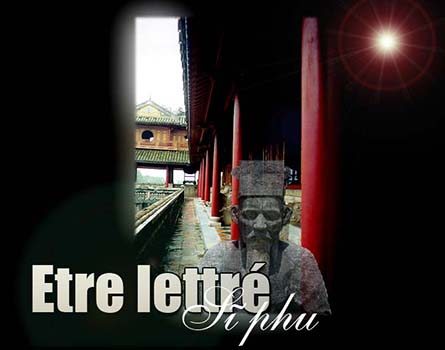
Ai ơi chớ lấy học trò
Dài lưng tốn vải ăn no lại nằm
Never marry a student, His long back costs a lot of fabrics
Once full, he just keeps lying down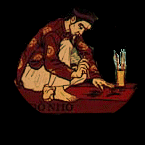
Equipped with intellectual kowledge, the learned man does not let himself be upset by these remarks and tries to reply with a snicker:
Hay nằm đã có võng đào
Dài lưng đã có, áo trào nhà vua
Hay ăn đã có thóc kho
Việc gì mà chẳng ăn no lại nằm
Lying down, here is the luxury hammock
My long back, this is the gown granted by the King
Eat until full, there is plenty of rice in the warehouse
I don’t have to worry, just eat until full, then lie down and rest
This consideration dated back from the time when Confucianism was implemented as the single model structure of the society.
This consideration dated back from the time when Confucianism was implemented as the single model structure of the society. The recruitment of the learned man as a mandarin was essentially based on the literary contests which took place every three years at the great temple of Confucius or the Temple of Literature (Văn Miếu). This temple was built by King Lý Thánh Tôn in 1070 and was changed to The College of the Nation’s Children (Quốc Tự Giám) in 1076. From 1484, the name of the scholar who passed the mandarinal contests was inscribed on a stele including his date of birth and his works. This practice of inscription on the stele was stopped only in 1778. Therefore, the dream of passing the mandarinal contests became an obsession for the majority of the learned men. Some of them passed their tests with an astonishing ease such as Nguyễn Bỉnh Khiêm, Chu văn An and Lê Quí Ðôn. Others failed several times as was the case of the learned man Trân Tế Xương whose poems always convey a caustic irony. His everlasting failure has influenced his works enormously. Besides litterary knowledge, the passing candidate or future mandarin must possess all the concepts of mandate of Heaven, filial piety, loyalty to the king (Nghĩa tôi ) and all the values that provide a cohesion to the confucian vision. Armed with these concepts, the learned man will try to accomplish his mission not only until the end of his days but also to the detriment of his life.
It was the case of the poet laureate Nguyễn Du who prefered retiring to serving the new regime after the fall of the Lê dynasty. It was also the case of the learned man Phan Thanh Giản who decided to take his own life with poison while advising his children to farm the land and not to accept any position during the French occupation of Cochinchina in 1867. As for the learned man Nguyễn Ðình Chiễu, author of the popular poem Lục Vân Tiên and one of the noblest figures of scholars, he never stopped giving moral support to the resistance during the colonial time.
Pictures gallery
Il n'ya pas de galerie sélectionné ou la galerie a été supprimé.
In his Confucian vision, the scholar tried to maintain at any costs and strictly apply these principles unless the king becomes no longer worthy of the obedience owed to him. In this case, the learned man being keen on justice, may overthrow the king because the latter has been dispossessed of the mandate of Heaven. It was the case of Cao Bá Quát who participated in the famous Locust uprising ( Giặc Châu Chấu ) in the name of the Le family against king Tự Ðức, and who was captured and executed by the latter in 1854.
Although the Scholar was one of the cornerstones of a society upon which rested so many Vietnamese dynasties to govern the country and the legitimate defender of moral values particularly the five human relations ( Ngũ Luân ), i.e. between the King and his subordinates, the Father and his son, the Husband and his wife, the Brother and his younger siblings, and the Friend and his friend), which enables us to have a social cohesion and a national identity through centuries, He is however the factor of inertia and cultural isolationism which proved to be mortal for the Nguyễn’s Empire since 1840.
While continuing to underestimate the foreign power and by maintaining his conservatism, the Scholar was incapable of adapting to modernizational reforms advocated by the modernistic learned man Nguyễn Trường Tộ. Thus, He became the major obstacle to reforms that Vietnam needed in facing the ambitions of the foreign powers. This compelled Him to disappear at the same time with the Empire during the French conquest.
The Scholar formed part of a population of 40,000 learned men, approximately 20,000 of whom were holders of ranks in 1880. The last learned man known for his patriotism and reformism was Phan Chu Trinh. This one was in favor of reforms and insisted on the priority of total progress of society, of the diffusion of the modern knowledge on simple political independence.
His banishment to Poulo Condor and especially his death in 1926 has brought an end to the dream of all Vietnamese to find an independent Vietnam with a policy of non-violence and gradual decolonization that he advocated and defended with enthusiasm and conviction for so many years.
Phan Chu Trinh
He tried to reveal his state of mind in his poem entitled
The candle
He wants the flame to shed light to the bottom of darkness
Because his heart is burned with anxiety of lighting
But the half-opened door lets in the north wind
In the ending night, with whom to share his tears?
It was the tears of the last great Vietnamese learned man. But it is also a cry of despair of a great
Vietnamese patriot facing the destiny of his country.

